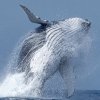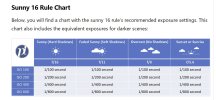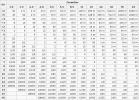I'm much better at shooting whale stills from on the water than I am above the water and have no issues with technique - But i'm simply rubbish from my drone.
I upgraded from an air2s to the Mavic 3PRO this year with the specific aim of improving my video and pics and understand batteries/ distance/ wind/exposure values/video quality etc so im left with one issue -
Do you use a polariser for videoing the whales or just an ND filter? I just cant wrap my head around how i'm going to manage a polariser if i'm turning the drone every which way in the air. How do people manage it?
The Drone videos I took last year were rubbish by my standards - when the whales breached the water highlights blew right out to unrecoverable, and dynamic range in the black water too black to recover and given that they are such difficult critters to predict I'm so focussed on doing a better job.
Any thoughts about polarisers would be helpful
cheers.

I upgraded from an air2s to the Mavic 3PRO this year with the specific aim of improving my video and pics and understand batteries/ distance/ wind/exposure values/video quality etc so im left with one issue -
Do you use a polariser for videoing the whales or just an ND filter? I just cant wrap my head around how i'm going to manage a polariser if i'm turning the drone every which way in the air. How do people manage it?
The Drone videos I took last year were rubbish by my standards - when the whales breached the water highlights blew right out to unrecoverable, and dynamic range in the black water too black to recover and given that they are such difficult critters to predict I'm so focussed on doing a better job.
Any thoughts about polarisers would be helpful
cheers.
















